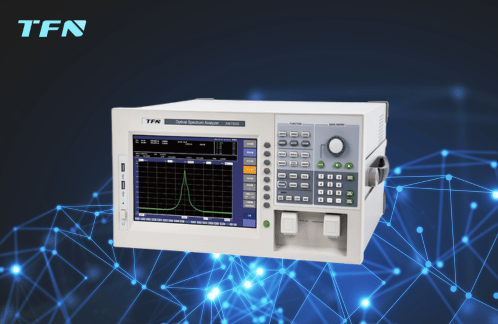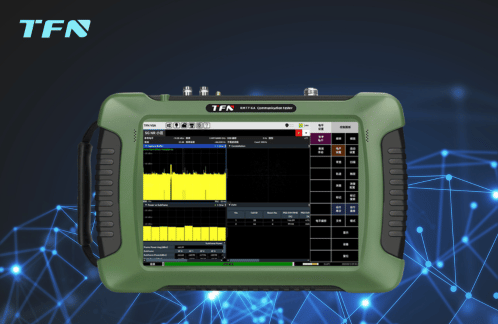Spectrum Analyzer vs. Optical Spectrum Analyzer: Core Difference Analysis
In many fields such as scientific research, communications, and material analysis, spectrum analyzers and optical spectrum analyzers are both indispensable precision measurement tools. Although the names are similar and both involve the analysis of "spectrum", the objects they measure, the working principles, and the application scenarios are completely different. A clear understanding of the difference between the two is crucial for the correct selection of instruments.
Measurement Object: Different Territories of Electromagnetic Waves
Optical Spectrum Analyzer (OSA):
The core mission of the OSA analyzer is to analyze optical signals. The "light" here mainly refers to electromagnetic radiation with wavelengths in the infrared, visible light to ultraviolet range. OSA measures the distribution of the power of the optical signal with wavelength (or frequency). Its key parameters include central wavelength, wavelength range (bandwidth), spectral resolution (the ability to distinguish similar wavelengths), dynamic range, etc. The units are usually nanometers (nm) or terahertz (THz).


Spectrum Analyzer (SA):
Spectrum analyzers are the main force in radio frequency (RF) and microwave signal analysis. SA measures the power distribution of electrical signals with frequency. Its operating frequency range usually starts from a few thousand Hertz (kHz) or a few megahertz (MHz), up to hundreds of gigahertz (GHz), and even terahertz (THz) (special modules are often required at this time). Key parameters include frequency range, resolution bandwidth (RBW), video bandwidth (VBW), displayed average noise level (DANL), phase noise, etc. The units mainly use Hertz (Hz) and its derivative units (kHz, MHz, GHz).
Working principle: the division between light and electricity
Working principle of optical spectrum analyzer:
Mainstream OSA is mainly based on the principle of diffraction grating or interferometer:
Grating type: The grating is used to produce different diffraction angles for light of different wavelengths. By rotating the grating or detector, light of different wavelengths is guided to the photodetector (such as photodiode) in turn to measure its power.
Interference type (such as Fourier transform spectrometer FT-OSA): The interference pattern is generated by using a Michelson interferometer, and the spectral distribution of the light source is obtained by Fourier transforming the interference pattern. This method usually has higher resolution and sensitivity.
In either case, the optical signal is ultimately converted into an electrical signal for power measurement and display.
Working principle of spectrum analyzer:
The core of modern mainstream SA is superheterodyne receiving technology:
1. Mixing: The input signal is mixed with the local oscillator (LO) signal inside the instrument in the mixer.
2. Intermediate frequency filtering: The intermediate frequency (IF) signal (usually a fixed frequency) generated by mixing passes through a resolution bandwidth (RBW) filter. The bandwidth of this filter determines the ability of the instrument to distinguish between two closely adjacent signal frequencies.
3. Detection and display: The filtered intermediate frequency signal is processed by a detector (such as peak detection, sampling detection, RMS detection, etc.), converted into a DC or video signal, and finally displayed on the screen as a curve (spectrum diagram) of power (usually dBm units) changing with frequency.
In addition, there are real-time spectrum analyzers based on fast Fourier transform (FFT), which are particularly suitable for analyzing transient or non-stationary signals.
Application scenarios: each with its own unique capabilities
Typical applications of optical spectrum analyzers:
Laser characteristic measurement (line width, central wavelength, side mode suppression ratio SMSR)
Light-emitting diode (LED) spectrum analysis
Fiber optic communication system testing (WDM/DWDM channel power, optical signal-to-noise ratio OSNR)
Characterization of optical components (filters, amplifiers)
Raman spectroscopy, fluorescence spectroscopy analysis (specific configuration required)
Material composition and structure analysis (combined with spectroscopy technology)
Typical applications of spectrum analyzers:
Wireless communication equipment development and testing (transmitter output, spurious emission, adjacent channel leakage ratio ACLR of mobile phones, base stations, WiFi, Bluetooth, etc.)
Electromagnetic compatibility (EMC) pre-test (radiated emission, conducted emission)
RF circuit design and debugging (amplifier, mixer, filter, oscillator gain, loss, distortion, phase noise)
Radar signal analysis
Satellite communication test
Signal monitoring and interference search
How to choose the right instrument?
Whether to choose a spectrum analyzer or an optical spectrum analyzer depends on the nature of the signal you need to measure:
Measure "light"? If you are dealing with optical fiber output signals, laser beams, LED light, or need to analyze the wavelength components of light (such as color, spectral purity, optical communication channels), then you need an optical spectrum analyzer (OSA).
Measure "electricity"? If you are dealing with RF, microwave or millimeter wave electrical signals transmitted through cables (such as coaxial cables) or antennas, and need to measure their frequency components, power, distortion, modulation characteristics or find interference sources, then you need a spectrum analyzer (SA).
Summary
Although the names of spectrum analyzers and optical spectrum analyzers differ by only one letter, they are precision instruments for completely different physical quantities (electrical signals vs optical signals) and frequency ranges (RF/microwave vs infrared/visible light/ultraviolet). Optical spectrum analyzers (OSA) focus on the wavelength/spectral characteristics of light and are core tools for optical communications, laser technology, and optical material research. Spectrum analyzers (SA) focus on frequency domain analysis of RF and microwave electrical signals and are the cornerstone of wireless communications, radar, electronic equipment development, and EMC testing. Understanding their inherent differences allows for accurate selection and ensures efficient and accurate measurement tasks.
